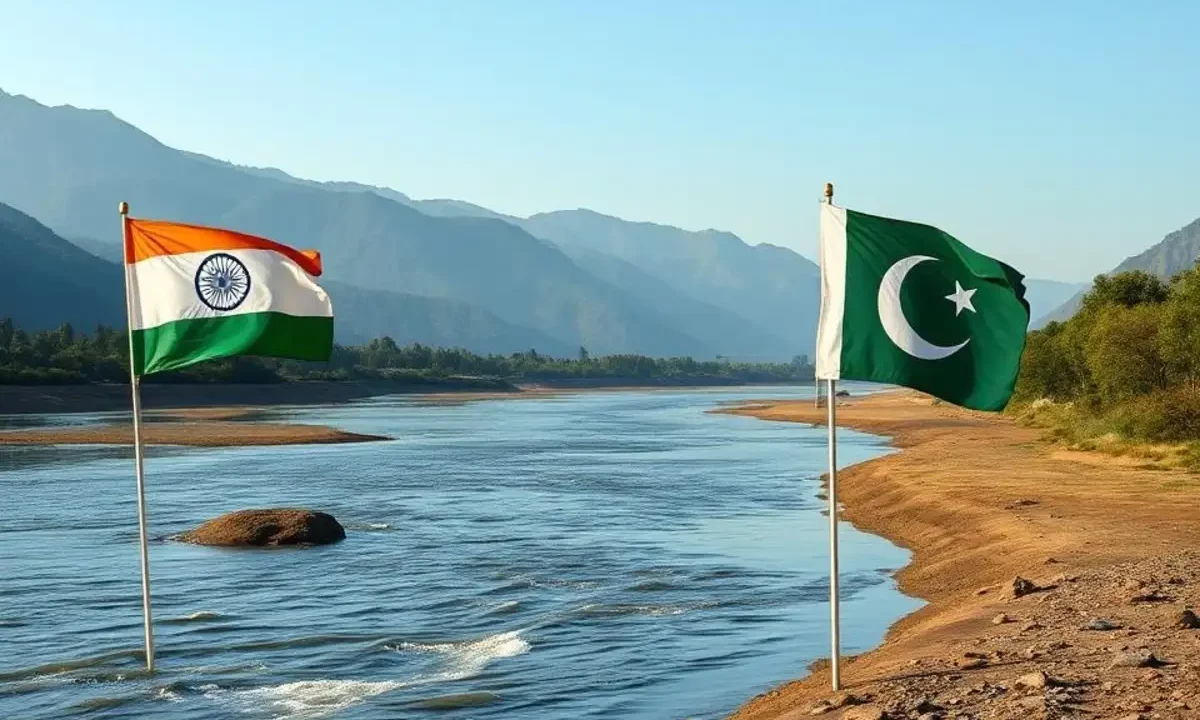
For decades, the rivers that flow from India into Pakistan have not only been natural lifelines but also silent threads in the fragile relationship between two nuclear-armed neighbors. But now, those once-peaceful waters are turning turbulent. In a bold and assertive move, India has reignited the water debate—this time, with action rather than rhetoric. The result? Dark clouds loom over Pakistan, and the ripples of this strategy are being felt far beyond riverbanks.
🛑 The Tipping Point: Why India Is Acting Now
Prime Minister Narendra Modi’s recent action on the Indus Waters Treaty is not a spontaneous reaction. It’s a calculated move—a part of India’s evolving strategy to counter terrorism not just with firepower, but with strategic resource control.
India, under the 1960 Indus Waters Treaty, has allowed the unrestricted flow of three rivers—Ravi, Beas, and Sutlej—to itself, and three western rivers—Indus, Jhelum, and Chenab—to Pakistan. Despite several wars and ongoing tensions, India has respected the agreement. But repeated betrayals and bloodshed have changed the narrative.
Modi’s government has now decided to fully utilize its rights over the eastern rivers—and may even explore legal options to curb the flow of western rivers. This shift isn’t just administrative. It’s psychological warfare. And it’s working.

😰 Sleepless Nights in Pakistan: The Panic Is Real
Within hours of India’s water warning, there were reports of crisis meetings in Pakistan’s top leadership. News outlets buzzed with debates, defense experts raised alarms, and citizens began questioning their water future.
Pakistan is already water-stressed. Its agriculture-heavy economy is dependent on river water—nearly 75% of its irrigation relies on the Indus basin. If India chooses to stop or delay water flows, food security, electricity, and daily life could collapse in many regions. This isn’t speculation—it’s a looming disaster.
Panic isn’t just political—it’s personal. Imagine the fear of a farmer in Punjab, Pakistan, waking up to dry canals. Or a mother in Sindh turning on the tap, only to watch it sputter. Water is no longer just a resource—it’s now a matter of survival.

🇮🇳 India’s Strategic Signal: Don’t Mistake Peace for Weakness
This move by India isn’t just about punishing Pakistan—it’s about reclaiming geopolitical respect. It’s a warning shot with the power to shake an entire nation without a single bullet fired.
India is telling the world: We will not be passive spectators in our own suffering. When soldiers are martyred and civilians are targeted, we won’t just condemn—we will act. And now, water is part of that action.
What makes this response especially clever is that it doesn’t break international law—at least not yet. It maximizes India’s legitimate rights under the treaty while forcing Pakistan into a state of uncertainty and dependence.

🌍 Global Reactions: A Ripple Across the Region
The world is watching. Strategists are already calling this India’s “hydro diplomacy.” While some worry about escalation, others are praising the non-violent yet impactful nature of this move.
Pakistan may approach the United Nations or World Bank in desperation—but legally, India is within its rights to take back the water that rightfully belongs to it. If nothing else, this has forced even India’s critics to admit one thing: Modi’s move was bold, brainy, and brutally effective.

💣 What’s Next? Dialogue, Desperation, or Dangerous Waters?
The big question now is: How far will India go? Will this remain a strategic signal, or evolve into a full-blown water blockade? Will Pakistan retaliate, or will it be forced into rethinking its stance on terrorism and ceasefire violations?
If diplomacy fails and Pakistan continues its aggression, India may escalate its control further. In that case, we won’t just be witnessing a political standoff—we could be entering the age of a full-fledged water war.

🧠 A New Era of Warfare: From Missiles to Rivers
Wars in the 21st century are not only about weapons—they’re about economic disruption, digital sabotage, and natural resource control. By targeting river water, India is reshaping how countries assert power in modern geopolitics.
In Pakistan today, the real terror isn’t what might be dropped from the skies—it’s what might stop flowing from the mountains.

📝 Conclusion: When Rivers Roar Louder Than Guns
Modi’s message was never meant to echo through gunfire—it was meant to flow through every stream, every canal, and every household that depends on Indian water. And it has succeeded.
As panic rises in Pakistan and the world leans in to listen, one truth becomes crystal clear:
When diplomacy fails and bullets backfire, water speaks louder. And this time, India is letting the rivers do the talking.





















